The most ancient has absolute dating (Fig. 8.1) and is the only one known from the Lower Paleolithic. All the other "Venuses" found in the 20th century have had different cultural attributions, the most ancient of which was Aurignacian and which is currently, for some authors, attributed to the Gravettian.
In this classification some "Venuses" are attributed to the Middle Paleolithic, that is to the Mousterian(Fig. 8.3), as they have the facial features or head of Neanderthals and moreover have a hood or perhaps a conic hairstyle, and often are represented gazing upwards.
The "Venuses" of the Upper Paleolithic generally have the head bent downward, looking down, and show a well-ordered hairstyle (Fig. 8.6).
In Italy (Balzi Rossi) was found a bicephalic "Venus" (Fig. 8.7). The discovery dates back to the 19th century, so the generic cultural attribution is the Aurignacian.
The "Venuses" continue in the Neolithic, and often are in terracotta; they assume new forms and different names: Goddess of Fertility, Mother Goddess, Great Mother, etc. In Mexico we find an abundance of "Venuses" with bicephalic heads, and also "Venuses" with two heads.
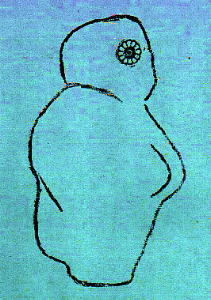
Fig. 8.1) Anthropomorphic stone sculpture carved from a pebble of red tuff (drawing). It represents a naked woman. Found by Prof. NAAMA GOREN-INBAR in 1980. These types of sculptures were called "Venuses" by the first discoverers, as it was thought they represented a feminine ideal for Paleolithic men; subsequently, a fertility cult was attributed to them and they were considered "idols" they are "divinities", but despite this enormous change of meaning, the name "Venus" has remained!
This Venus is the oldest and smallest known. Like the other "Venuses" the sexual attributes are well-represented, but hands, feet and facial features are not represented. This one has no legs.
Dimensions: height: 1.3 inches; width: 0.98 inch.
Origin: Berekhat Ram, northern Golan, Israel.
Material culture: Upper Acheulean.
Absolute dating: from 233,000 to 800,000 years ago; other dating from 330,000 to 800,000 years ago. (One paleoethnologist states 233,000 another 330,000 years.)
The following experts have studied this sculpture: Prof. A. Marschack, Prof. F. D'Errico, Prof. A. Nowell, Prof. A. Pelcin, Prof. P.G. Bahn, Prof. Vertut, and of course Prof. Goren-Inbar.
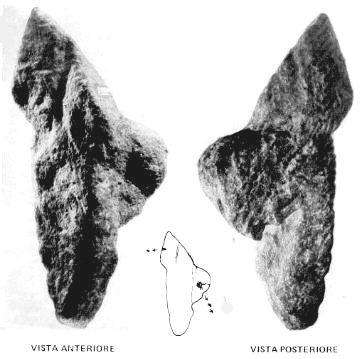
From the head, neck and shoulder, it seems to represent a Homo sapiens neanderthalensis.
Height: 9.4 inches.
Origin: Tiglieto, Genoa, Italy.
Material culture: Mousterian.
Collection of the Museum of the Origins of Man.
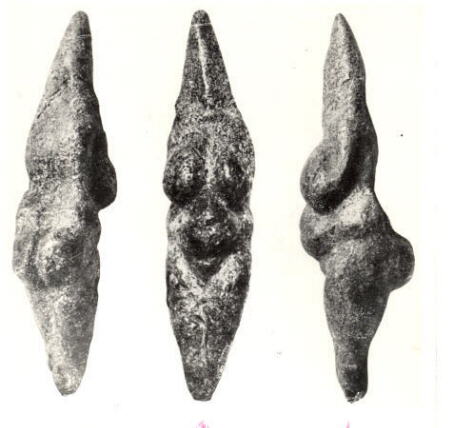
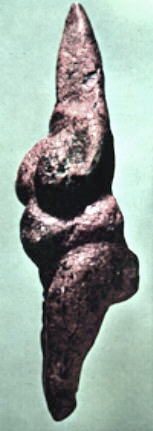
Height: 8.6 inches.
Origin: Savignano sul Panaro, Modena, Italy.
Material culture: Mousterian.
Location: Luigi Pigorini National Museum of Prehistory and Ethnography, Rome.
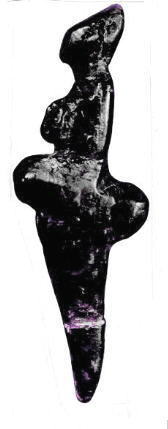
Height: 2.3 inches.
Origin: Balzi Rossi cave, Imperia, Italy.
Material culture: Mousterian or Upper Paleolithic (Aurignacian).
Location: Musée d’Archéologie nationale (National Archaeological Museum), Saint-Germain-en-Laye, Paris.
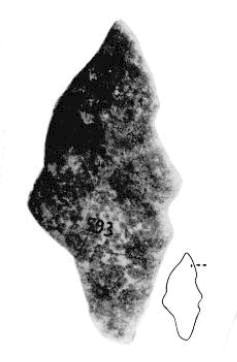
This sculpture is obtained from a stone slab 0.39 inch thick, and is fluted at the edges from alluvial rolling. For the back and the pointed head it can be considered a Homo sapiens neanderthalensis, with characteristics similar to the other "Venus of Savignano" and to the "Venus of Balzi Rossi" (Fig. 8.4). It is as fat as the "Venus of Willendorf"(Fig. 8.6).
Height: 5.3 inches; width: 0.39 inch.
Origin: Savignano sul Panaro, Modena, Italy.
Material culture: Mousterian.
Collection of the Museum of the Origins of Man.
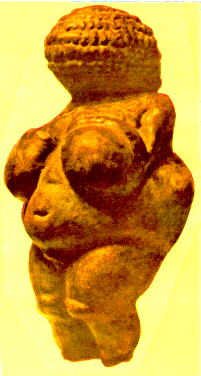
Height: 4.4 inches.
Origin: Willendorf, Austria.
Material culture: Upper Paleolithic.
Location: Naturhistorisches Museum (National History Museum), Vienna, Austria.
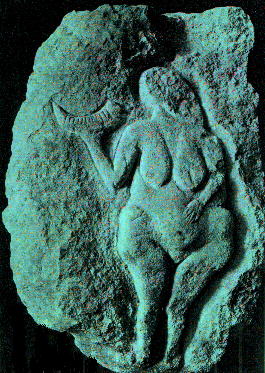
Height: 17.5 inches.
Origin: Laussel, France.
Material culture: Upper Paleolithic.
Location: Archaeological Museum of Aquitaine, Bordeaux, France.
Copyright©2020 by Museum of the Origins of Man, all rights reserved.